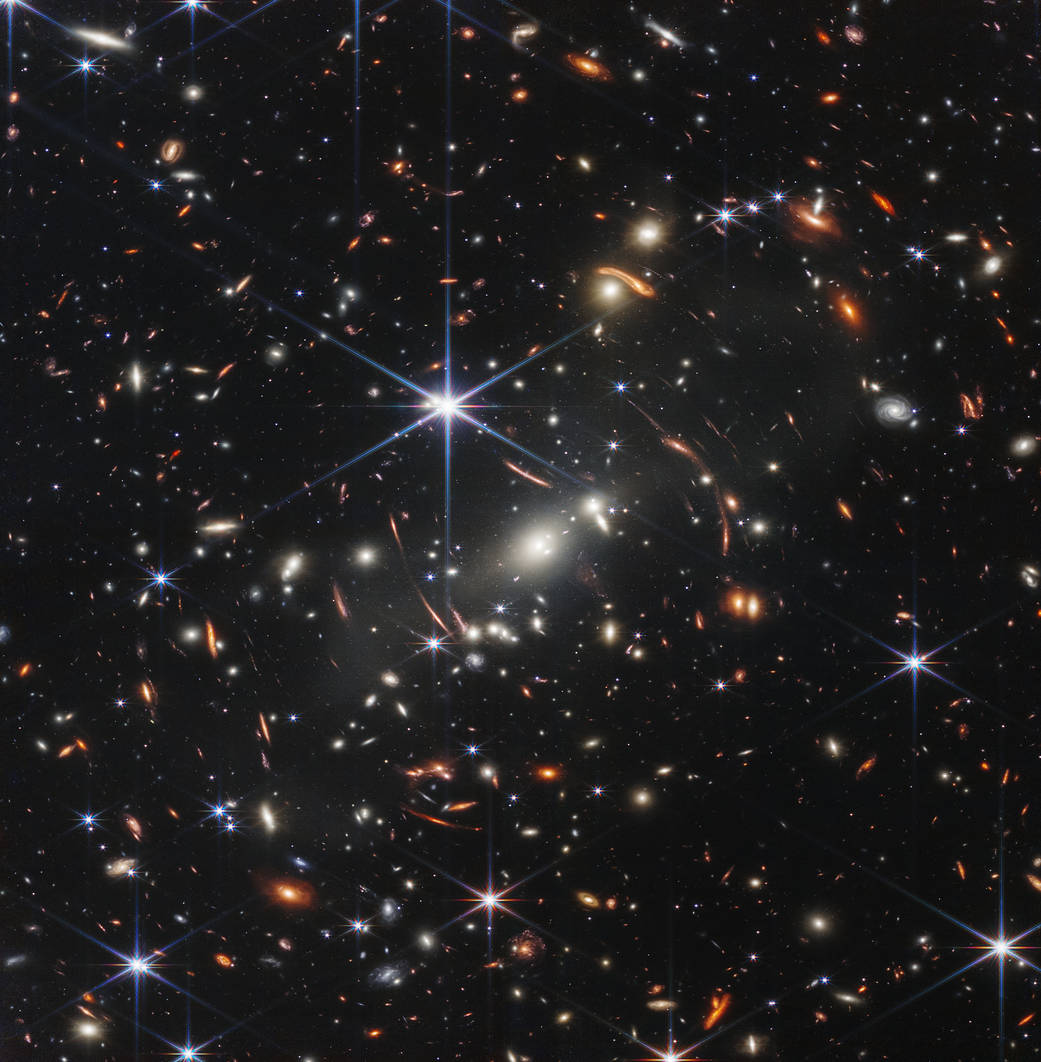Rami Ammoun hat sich 50 Nächte lang Zeit genommen, um mit seinem Teleskop Fotos vom Mond zu machen. In wirklich schwer beeindruckender Qualität.
Einen Kommentar hinterlassen
Rami Ammoun hat sich 50 Nächte lang Zeit genommen, um mit seinem Teleskop Fotos vom Mond zu machen. In wirklich schwer beeindruckender Qualität.
Einen Kommentar hinterlassen
Offenbar ziemlich genau so:
Since 2003, the black hole at the center of the Perseus galaxy cluster has been associated with sound. This is because astronomers discovered that pressure waves sent out by the black hole caused ripples in the cluster’s hot gas that could be translated into a note – one that humans cannot hear some 57 octaves below middle C. Now a new sonification brings more notes to this black hole sound machine. This new sonification – that is, the translation of astronomical data into sound – is being released for NASA’s Black Hole Week this year.
Musikalisch übersetzt dann doch deutlich freundlicher.
Einen Kommentar hinterlassen„It is the deepest image of our universe that has ever been taken“, sagt NASA-Admin Bill Nelson.
The image shows the galaxy cluster SMACS 0723 as it appeared 4.6 billion years ago. The combined mass of this galaxy cluster acts as a gravitational lens, magnifying much more distant galaxies behind it. Webb’s NIRCam has brought those distant galaxies into sharp focus – they have tiny, faint structures that have never been seen before, including star clusters and diffuse features. Researchers will soon begin to learn more about the galaxies‘ masses, ages, histories, and compositions, as Webb seeks the earliest galaxies in the universe.

Mit Vergleich zum Hubble:
8 KommentareHubble vs JWST. The same patch of sky. Just amazing. pic.twitter.com/n8vb9ewq3I
— Shannon Stirone💀 (@shannonmstirone) July 11, 2022
Die NASA hat ein Video veröffentlicht, das vom Mars Perseverance Rover aufgenommen wurde und eine Sonnenfinsternis zeigt, wie wir sie von hier aus wahrscheinlich nie sehen werden.
Captured with Perseverance’s next-generation Mastcam-Z camera on April 2, the 397th Martian day, or sol, of the mission, the eclipse lasted a little over 40 seconds — much shorter than a typical solar eclipse involving Earth’s Moon. (Phobos is about 157 times smaller than Earth’s Moon. Mars’ other moon, Deimos, is even smaller.)
https://youtu.be/aKK7vS2CHC8
(Direktlink, via Kottke)
Libration: „In der Astronomie bezeichnet Libration eine echte oder scheinbare Taumelbewegung eines Mondes, gesehen von seinem Zentralkörper.“
Einen Kommentar hinterlassenWie es dort oben aussieht. Erinnert nicht wenig an Dune.
Made with 44 images from Perseverance Rover on Sol 354
Image data was denoised, repaired, stitched, graded and rescaled for this film.
https://youtu.be/XQZPTCjukyo
(Direktlink)
Wer schon immer mal in 360° durch die ISS schweben wollte; bitte schön. Ich schwebe mal voran.
ESA astronaut Thomas Pesquet takes you on a brief tour of the International Space Station like no other. Filmed with a 360 camera, he floats from Node-3 to Europe’s Columbus laboratory.
Immerse yourself in this brief but unique fly through humankind’s orbital outpost.
(Direktlink, via Neatorama)
Der Perseverance Rover der NASA ist seit ein paar Monaten auf dem Mars unterwegs und schickt regelmäßig Fotos von dort oben. Der Rover hat auch zwei Mikrofone dabei und zeichnet mit diesen die Sounds des Mars‘ auf. Hier als Playlist, die auch hörbar macht, wie Erdengeräusche dort klingen könnten.
NASA’s Perseverance Mars rover carries two microphones which are directly recording sounds on the Red Planet, including the Ingenuity helicopter and the rover itself at work. For the very first time, these audio recordings offer a new way to experience the planet.
Earth and Mars have different atmospheres, which affects the way sound is heard. Justin Maki, a scientist at NASA’s Jet Propulsion Laboratory and Nina Lanza, a scientist at Los Alamos National Laboratory, explain some of the notable audio recorded on Mars in this video.
https://youtu.be/GHenFGnixzU
(Direktlink, via Kottke)
Acht Stunden Tiefenentspannung in 4K Ultra HD. Ich habe seit vorhin Urlaub (Und die ersten zwei Stunden davon einfach mal geschlafen. Haha!) und vielleicht wäre jetzt gerade ein guter Moment, mal wieder den Beamer rauszuholen, um das durch die Stube zu projizieren.
(Direktlink, via Kottke)
Spätestens in den letzten Tagen wurde klar, dass William Shatner aka Captain Kirk mit der Enterprise nie tatsächlich ins All geflogen ist und alle Darstellungen davon in irgendwelchen Filmstudios entstanden sind. Fake!!11!!!
Das wird sich heute ändern: der 90-jährige Shatner wartet mit den Besatzungsmitgliedern Dr. Chris Boshuizen, Glen de Vries und Audrey Powers an Bord der New Shepard-Rakete von Blue Origin auf seinen ersten echten Start ins All, den wir uns alle im Live-Stream ansehen können. Nach 11 Minuten kommt er zurück auf die Erde. Na dann.
9 Kommentare